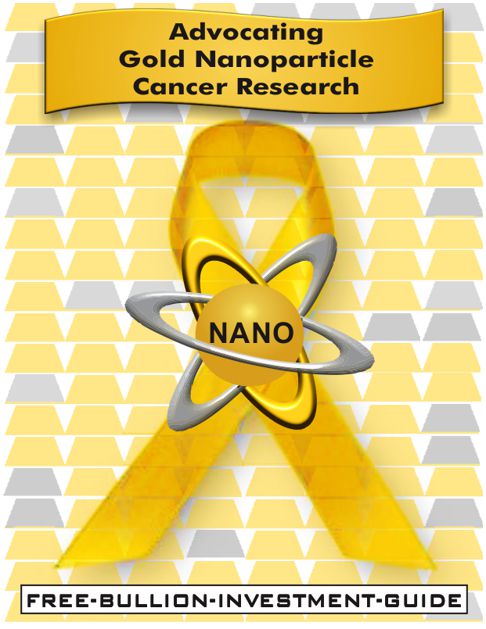1st Cancer Research
Update
Tweet
10/10/2014
This is the First Cancer Research update from Dr. Steven Curley's research team located at the Baylor College of Medicine in Houston, TX.
The research team uses Gold Nano-particles and the Kanzius Radio-wave machine to achieve results that only cause harm to the tumor and not the individual, unlike most other commonly used treatments for cancer.
Introduction
Late last month (September 2014), Dr. Stuart Corr, Assistant Professor of Dr. Steven Curley's Division of Surgical Research, updated the guide on the research that Dr. Steven Curley has been doing with Gold Nano-particles and the Kanzius Radio-wave machine.
Dr. Corr, sent PDF copies in the form of manuscript publications. I
informed Dr. Corr, that would summarize the information to inform you of their work.
I have included for you links to the research, below each summary.
Radio-wave Therapy & Gemcitabine
Dr. Curley's research team recently conducted two investigations using a common chemotherapy drug called Gemcitabine.
The trade name for Gemcitabine is Gemzar. This drug incorporates itself into the cancerous tumor's DNA, causing the tumor to stop replicating.
1st Research Study
Gold Nano-particles and Radio-frequency in Experimental Models for Hepatocellular Carcinoma
Primary hepatocellular carcinoma (HCC - liver cancer) is an aggressive
disease. Globally, about one million new cases of HCC are diagnosed
each year, with a high mortality rate.
The research team purposely focused its investigation on gemcitabine,
which is not used for the treatment of HCC because of the tumor's
substantial resistance to the drug.
The team believes it is a priority to understand the mechanisms of
gemcitabine chemo-resistance and to develop methods to overcome this
resistance.

In the first study, Dr. Steven Curley's research group used tumor targeted gold nano particles, the kanzius radio-wave frequency system and a common clinically-available chemotherapy drug known as Gemcitabine.
The Gemcitabine induced gold nano-particles were injected into the test
subjects (mice), once the gold nano-particles collected in the tumor,
the research team administered the kanzius radio-wave frequency system, causing hyperthermia, heating the tumor.
The research team found that the experiment was specifically toxic to the tumor while undetectable damage was found to normal cells.
The study offered many conclusions.
First, their research concluded that by using the combination of gold nano-particles, the radio wave frequency system and Gemcitabine lowered the current relevant dose used for the drug to achieve reduction in tumor size.
The study also offered evidence that this drug could be used on stronger forms of cancer, like liver cancer.
Furthermore, proving that by using this method of treatment to hepatocellular carcinoma (liver cancer), made the Gemcitabine more potent with lower dosages.
Ultimately, offering the patient better results, while reducing the side-
effects from chemotherapy.
Link to Research: Gold nanoparticles and radiofrequency in experimental models for hepatocellular carcinoma
2nd Research Study
Hyperthermia Inhibits Recombination Repair of Gemcitabine-Stalled Replication Forks
The second study that the research team did also used Gemcitabine, it
addressed the drugs inability to stay effective.
It is known in the medical community that after a while an individual has been given Gemcitabine, the drug looses it's potency and becomes ineffective.
This allows the tumor to repair the damage that Gemcitabine caused.
In this study, they tried four different experiments on a mouse with liver cancer.
The studies included untreated mice, Gemcitabine treatment mice only, hyperthermia (radio-wave treatment) only, and a combination of using Gemcitabine and Hyperthermia. (Gold nano-particles where not involved in this experiment)

As the above photo shows, the research team treated the subject (mouse) in the four different experiments over different periods of time.
In the graphic, the time period shows how many hours the mouse was administered the chemotherapy drug, gemcitabine. (t=time, h=hours)
Furthermore, in the gemcitabine and radio-wave (hyperthermia) treated tumor experiment, the team administered the radio-wave system for the last two hours of the gemicitabine treatment.
The conclusion of the study found that Dr. Curley's research team were able to demonstrate in this experiment that the radio-wave system knocked out the repair mechanism of the tumor to regenerate, allowing the Gemcitabine to be more effective.
Link to Research: Hyperthermia Inhibits Recombination Repair of Gemcitabine-Stalled Replication Forks
Return from the Cancer Research Update1 page and
|
Support this Guide & Paypal Thank You for Your Support |
|
|
 | |||||
Free Bullion Investment Guide
Keep this Guide Online
& Paypal
Thank You for
Your Support
Search the Guide
| search engine by freefind | advanced |

Daily
Newsletter
Mintages
for
2024
Gold & Silver Mexican Libertad
|
Gold Libertads |
Chinese Gold Coin Group Co.
& Chinese Bullion
2025
Gold & Silver Chinese Panda
|
Silver Panda |
Help Us Expand our Audience by forwarding our link
www.free-bullion-investment-guide.com.
Thank You!
March's

All Articles were Originally Posted on the Homepage
Affiliates
50% of the Guide's Affiliate Sales Commissions are Donated to Cancer Research Utilizing Gold Nano-Particles






















